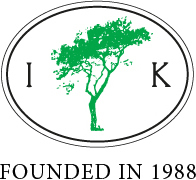ikfoundation.org
Promoting Natural & Cultural History





THE FISH HERBARIUM
– Collected by Peter Forsskål in the 1760s

| TYPE: | Image |
| DATE: | 1761 - 1763 |
| AUTHOR: | Fish herbarium, Peter Forsskål (1732-1763) |
| PHOTOGRAPHER: | Viveka Hansen, The IK Foundation |
| COLLECTION(S): | • Natural History Museum of Denmark • Zoological Museum in København. Peter Forsskål’s fish herbarium sheets, exhibition (no. 50). October 2021. |
| REFERENCE(S): | • Edberg, Ragnar, ‘Collecting and preparing’, The Linnaeus Apostles – Global Science & Adventure, Volume One pp. 309-366, London & Whitby 2010 (Fish in herbaria, p. 355). |
| ADDED: | 12/11/2021 |
| iFELLOW: | Viveka Hansen |
| JOURNALS ETC: | Linnaeus Apostles Global Science & Adventure, Volume 4, Page 339 |
| CONTENT: | Peter Forsskål, in the capacity of botanist and zoologist, managed to amass an extensive herbarium during the scientific Royal Danish Expedition to Arabia in the early 1760s. The rare collection is today part of the Zoological department of the Natural History Museum of Denmark – consisting of 700 botanical species and 99 species of fish glued onto herbarium sheets. Noticeable is that Forsskål used the drying process of fish learned during his student years from Carl Linnaeus. It was a simple procedure and particularly suitable in hot climates. The fresh fish was dried for some hours in the sun until the skin could easily be removed from the body. All the flesh and fat was removed and there after the empty skin was glued onto a coarse paper. An economical method, which was easier to handle, store and transport, compared to when fish were preserved and kept in glass jars or bottles filled with spirits. This drying method has proved to be successful, evident due to the surprisingly good condition of his fish herbarium still mounted on paper 260 years later. |
RETURN TO iLOG
iLOG
iLOG is the overarching definition for two key features of the iLINNAEUS; the first being iPROJECTS which for example denotes the continual publication of travel excerpts from the Bridge Builder Expeditions amongst other iPROJECTS  . Secondly the ADD KNOWLEDGE function
. Secondly the ADD KNOWLEDGE function  allows iFELLOWS to add their own contributions to the wider fount of knowledge which was established by the Linnaeus Apostles. This function also includes SPECIAL COLLECTIONS of Natural & Cultural History material related to The Linnaeus Apostles, kept in collections of museums and organisations around the World.
allows iFELLOWS to add their own contributions to the wider fount of knowledge which was established by the Linnaeus Apostles. This function also includes SPECIAL COLLECTIONS of Natural & Cultural History material related to The Linnaeus Apostles, kept in collections of museums and organisations around the World.
Updated/Checked 09/02/2023
THE IK FOUNDATION & COMPANY PROMOTING NATURAL & CULTURAL HISTORY
SUBSCRIBE TO OUR NEWSLETTER
TRANSLATE PAGE
A link to this page has
been copied to your clipboard
SHARE @been copied to your clipboard




© The IK Foundation & Company 2025
– a truly European organisation since 1988
– a truly European organisation since 1988
Legal issues | Forget me | and much more...
HOW TO CITE or MAKE CREDIT
It is free to use the information/knowledge in The IK Workshop Society so long as you follow a few rules.
 LEARN MORE
LEARN MORE
It is free to use the information/knowledge in The IK Workshop Society so long as you follow a few rules.
 LEARN MORE
LEARN MORE







